カンピナス大学 科学博物館・国際コンペ提案
International Public Competition for an Architectural Project for the EXPLORATORY SCIENCE MUSEUM OF UNICAMP
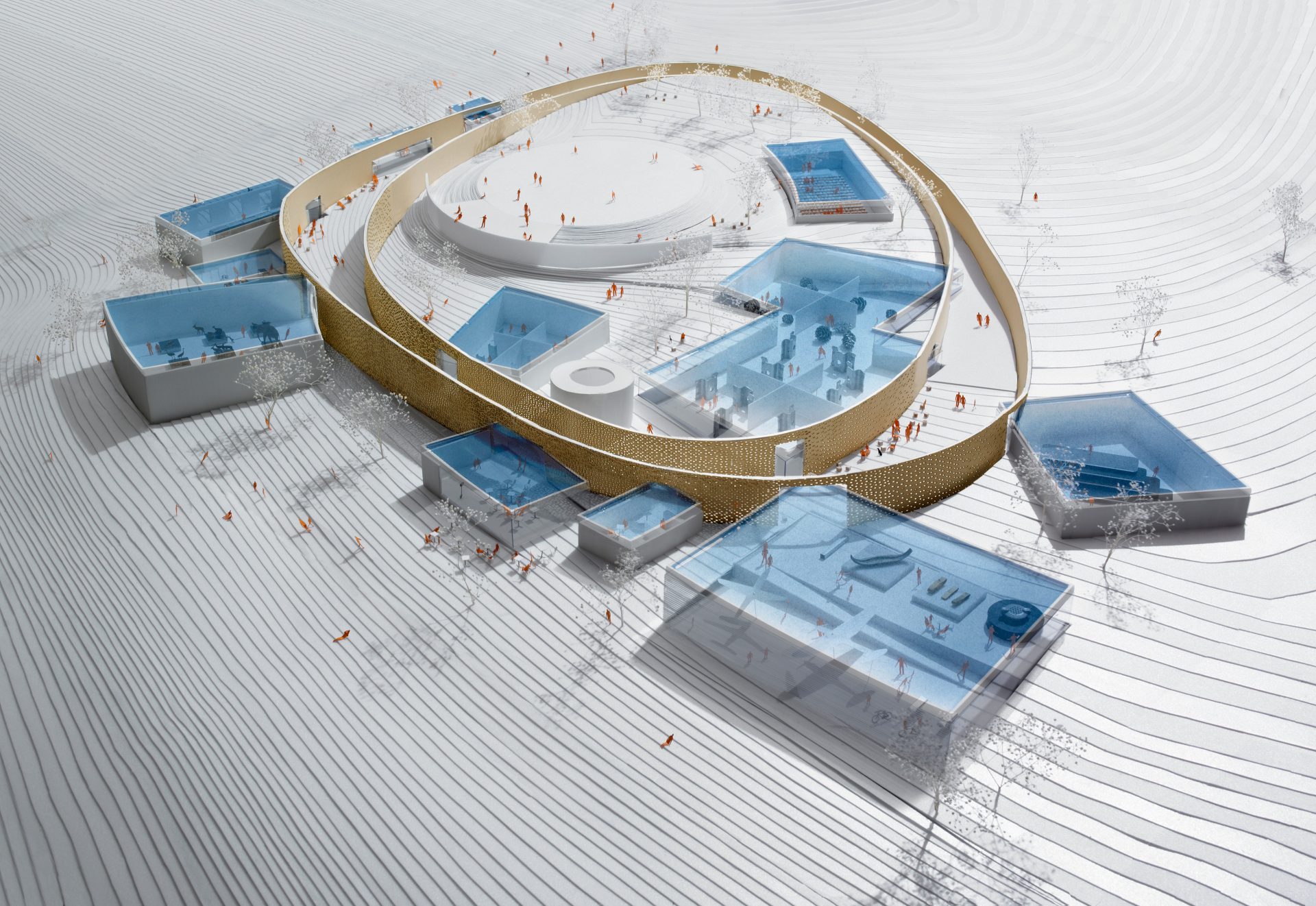


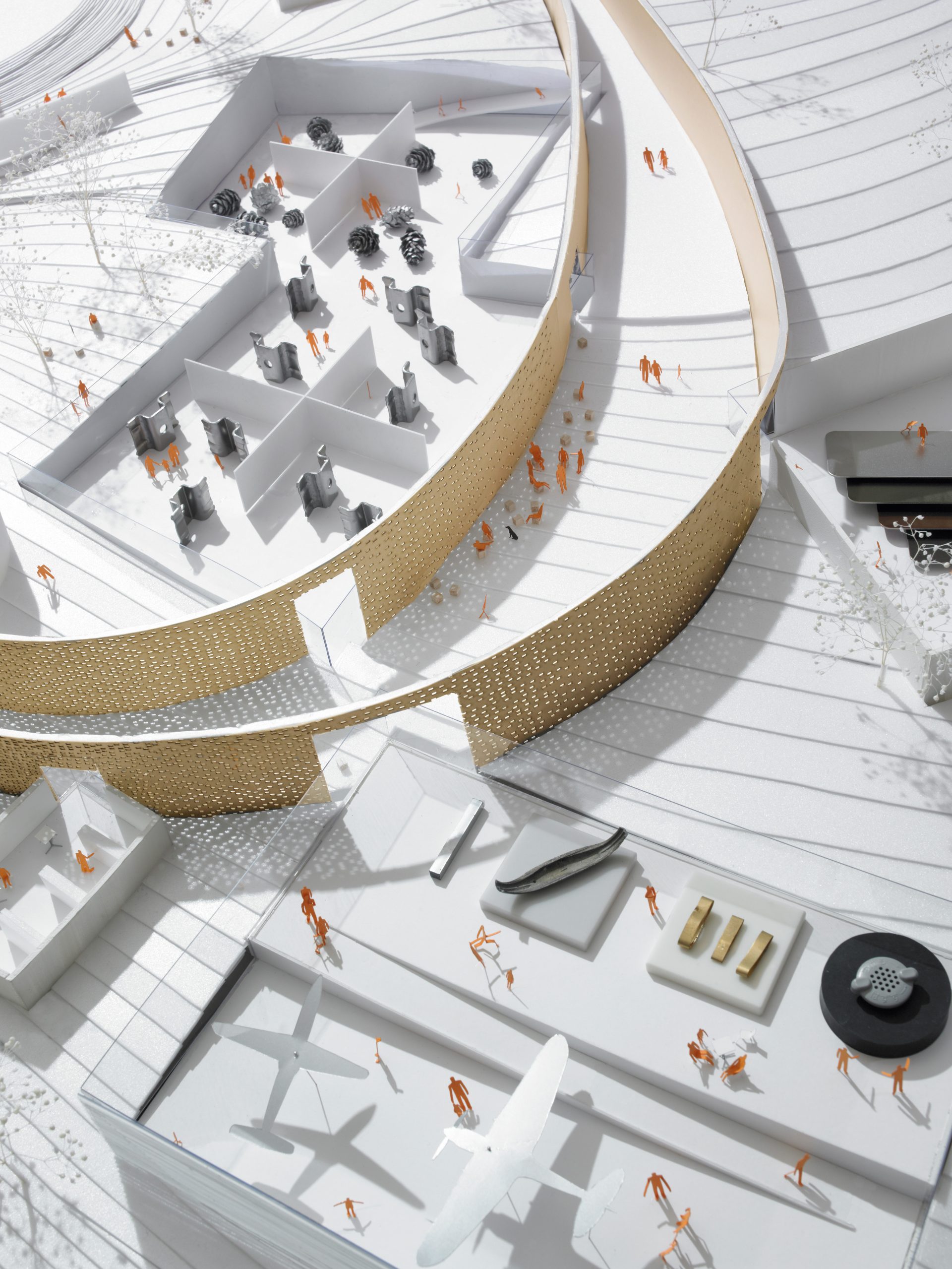
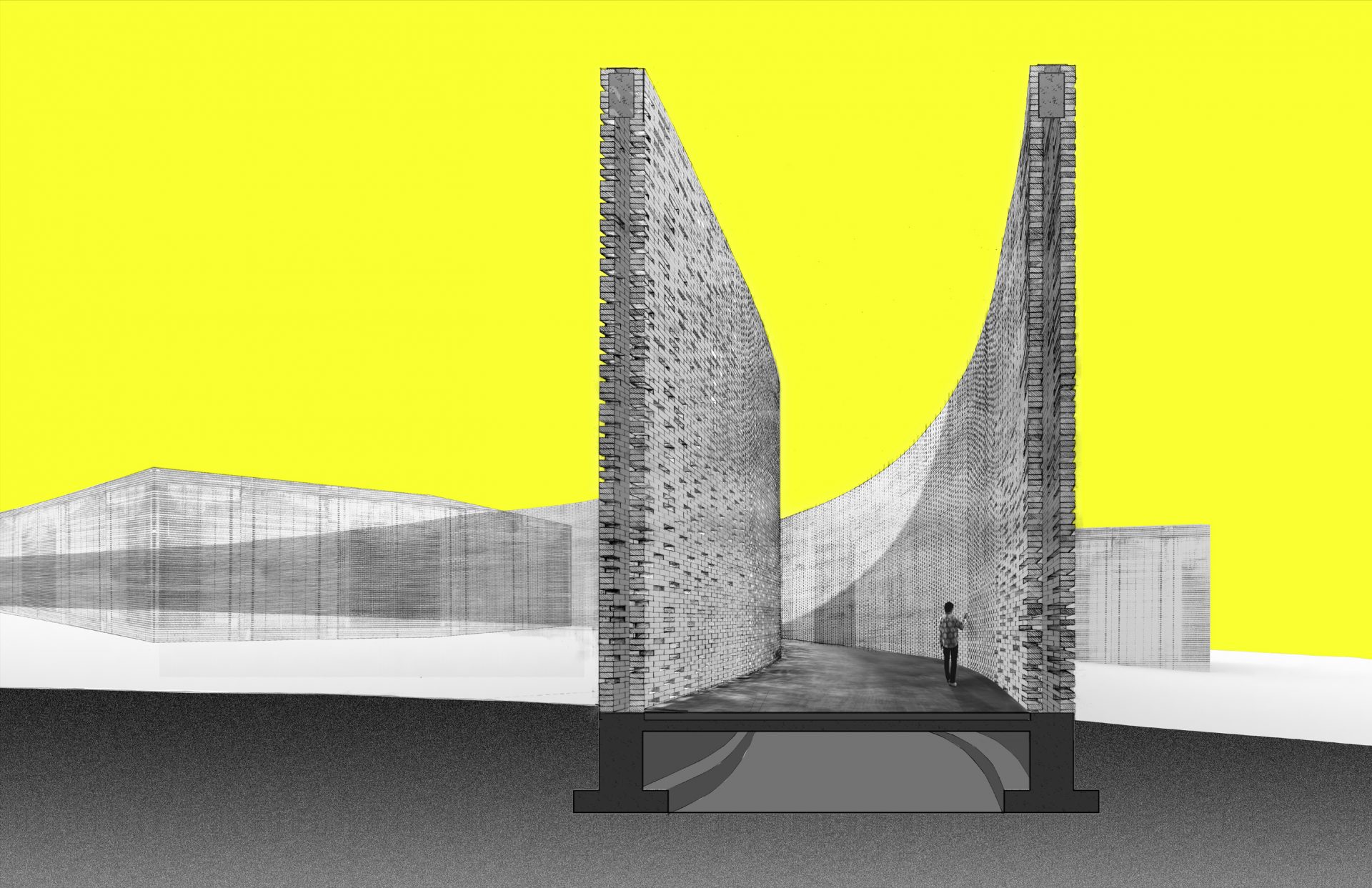
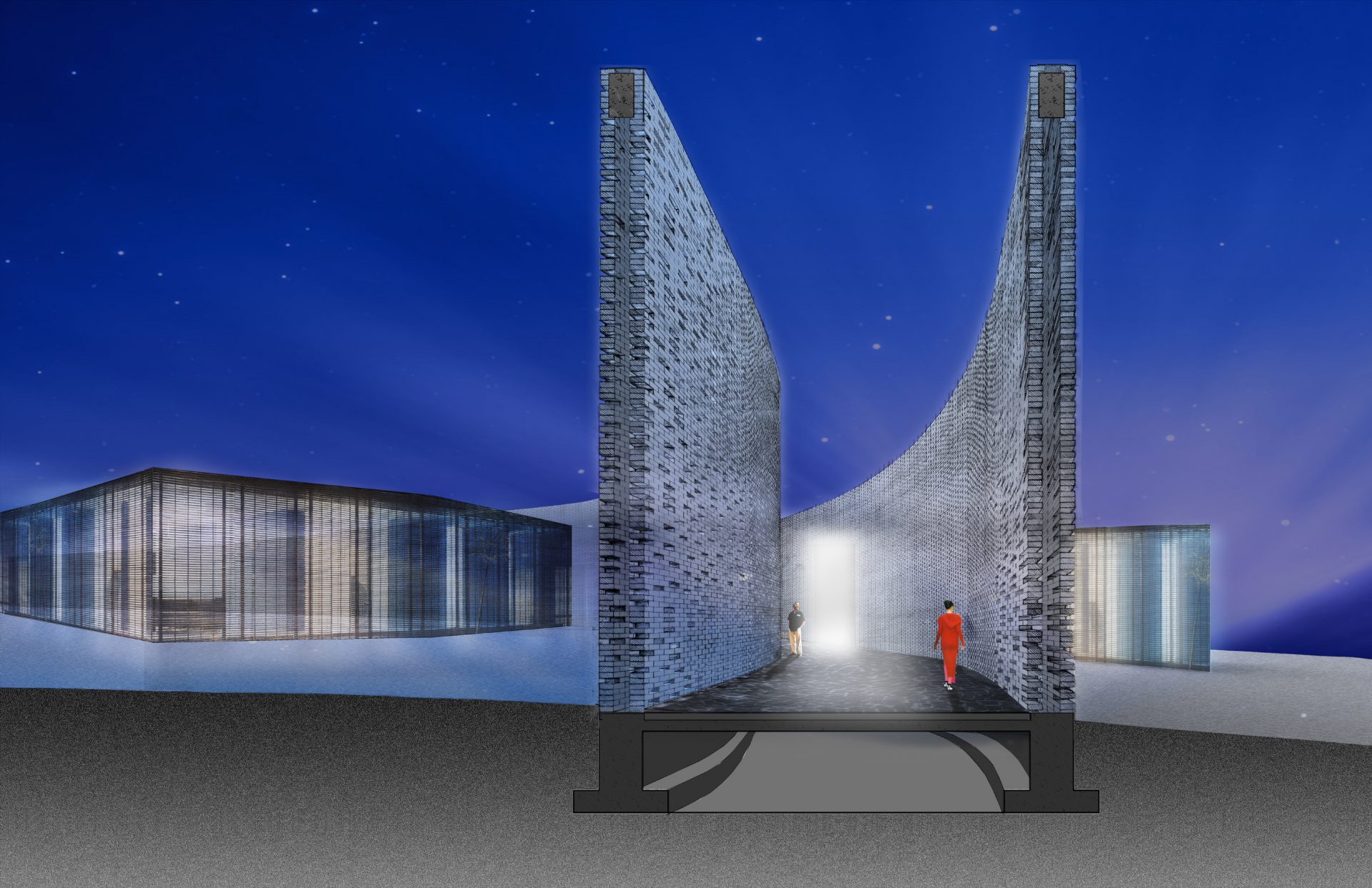





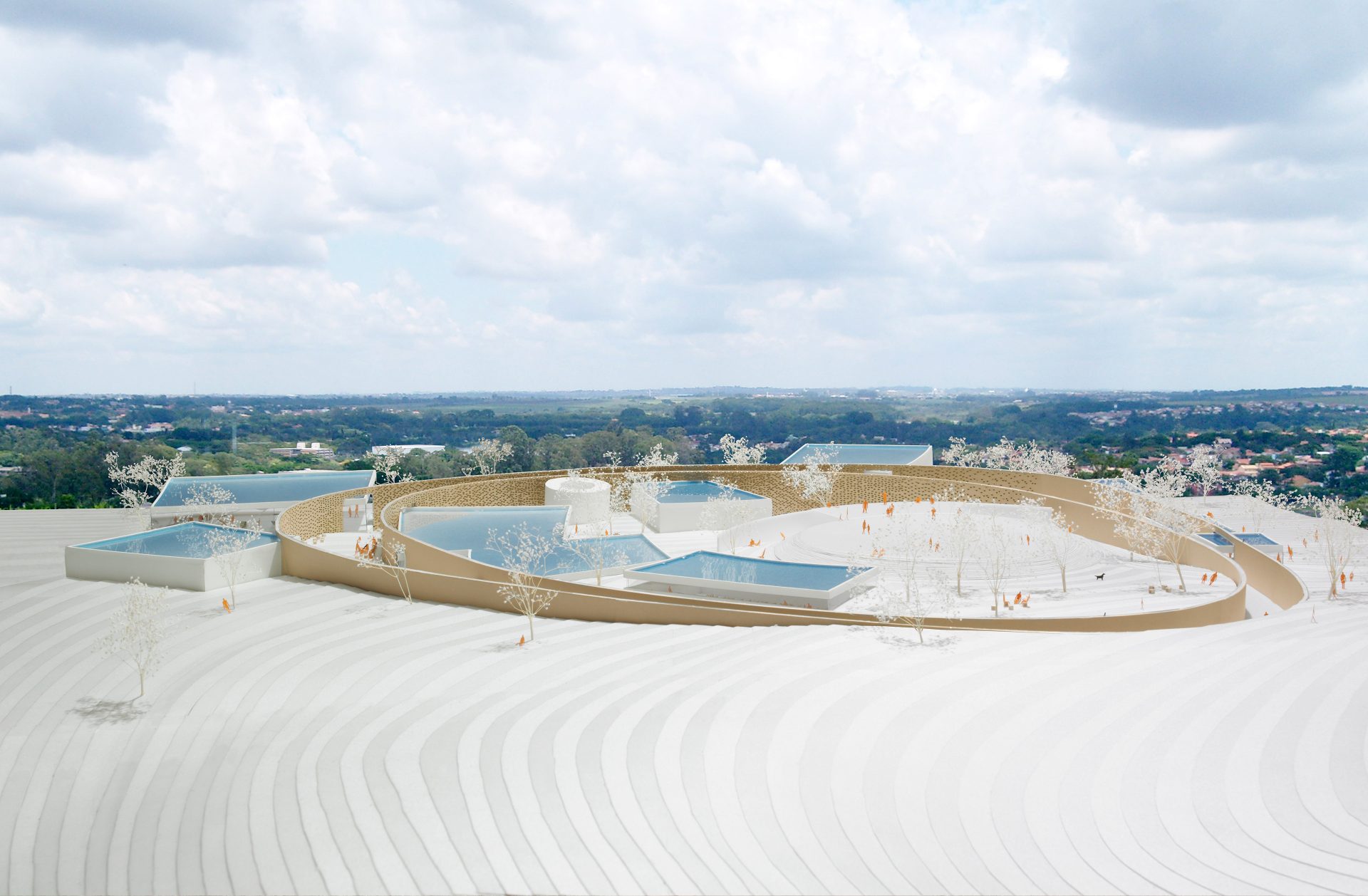

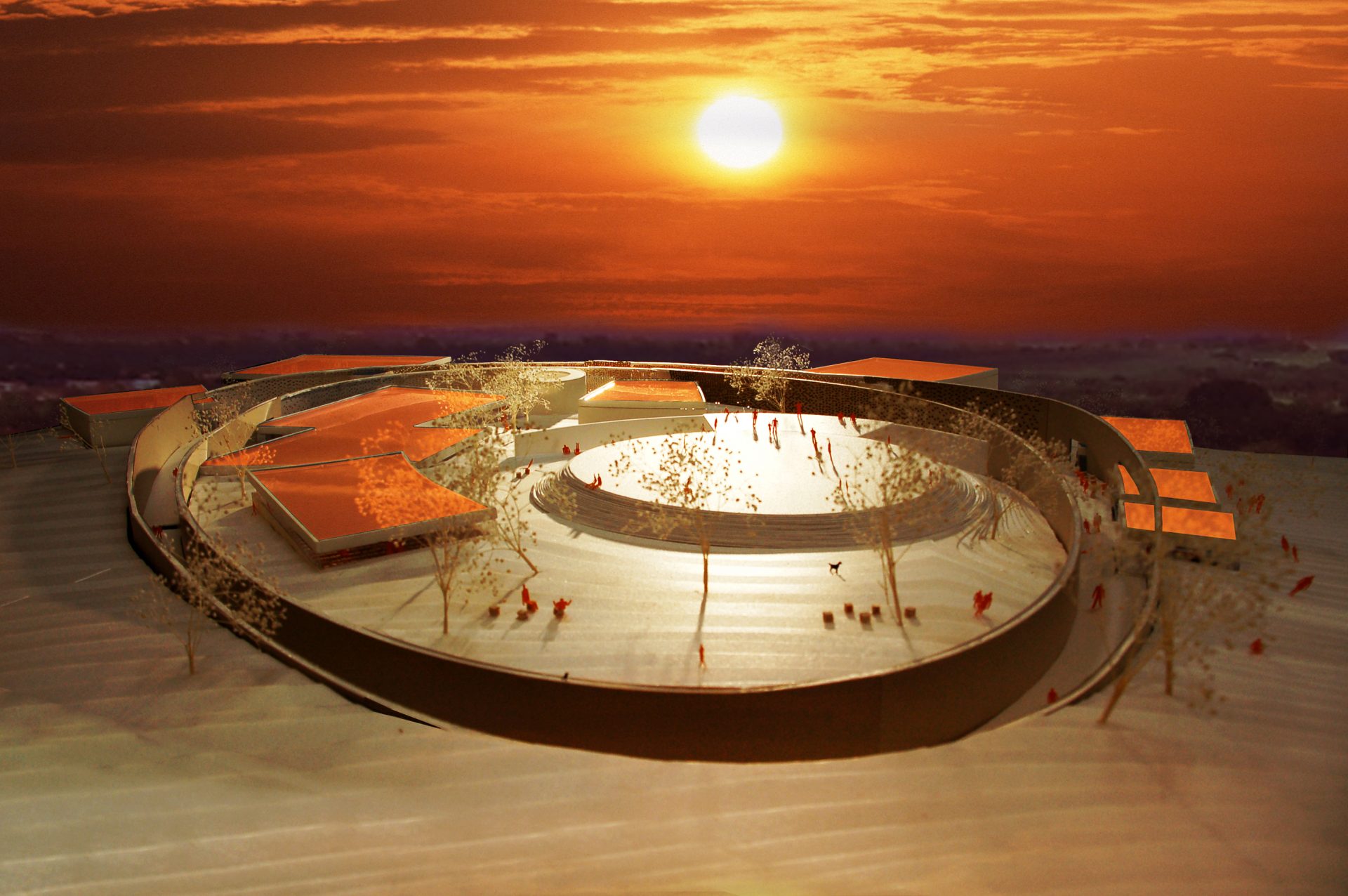

カンピナス大学 科学博物館・国際コンペ提案
2010 / Category: cultural, competition
コンペ概要
ブラジル、サンパウロの近郊都市カンピーナス市にあるカンピーナス大学内に計画される科学博物館(Exploratory Science Museum)の国際コンペへの応募案。
敷地面積は29,000㎡、要求床面積は5,350㎡。要綱では具体的な展示物は未定とされ、ハイテクな技術に頼らない、ローコストな建築の提案が求められた。
NECKLACE
我々が提案したのは、敷地の豊かな条件-緩やかな斜面地、穏やかな気候、美しい太陽の光-を最大限に尊重し、内部空間と外部空間が同時に織り込まれた建築<NECKLACE>である。
<NECKLACE>は、博物館のメイン動線かつ屋外の展示スペースでもある<POROUS LOOP>=チェーンと、分離した展示空間=宝石から構成されている。
<POROUS LOOP>はレンガをポーラスに積んで出来た壁にはさまれた屋外空間で、美しい光が移ろい、穏やかな風が流れる。博物館を訪れたひとはここで自然のダイナミズムを体感しながら、各々の展示室にアクセスする。光や風、地形、アクティビティなどを緻密に検討してループのかたちは決定され、建築の骨格をつくる。また、ローコストな現地の材料、工法とすることで要求の倍以上のフットプリントを実現し、全方位からのアクセスを受け入れる。
<DISCRETE VOLUME>は要求面積をみたすボリュームを仮に配置しているにすぎない。詳細な計画の際に場所、形、大きさなどを必要なスペックに応じて決めればよい。また、将来に新しいボリュームを増築することも可能としている。
すばらしいパノラマの眺望を失わないために、<NECKLACE>は傾斜地に対して滑り込むように配置される。その結果、ループの半分が地上で半分が地下となり、ループ1周で様々な断面的な体験をすることができる。ループ天端の水平のスカイラインはキャンパスの新しいランドマークとなると同時に、緩やかな勾配のランドスケープの美しさを強調するだろう。
科学は、われわれの身の回りのどこにでも存在している。閉じた展示室で展示品を鑑賞するだけではなく、実際に起こる自然の奇跡から科学を体感すること。それが新しい科学博物館がもたらすべき価値であるはずだと考え、あえて屋外の動線による<NECKLACE>という形式を提案した。
21世紀のサステイナブル建築へ-永続する建築のために
しなやかさとタフさを兼ね備えた建築をつくりたいと考えている。フレキシブルな要素(永続性)を許容する強い骨格(永遠性)を持った建築。それは、長持ちする材料で作る、といった「物質」の話ではなく、遺跡のように、永遠に続く「現象」によって定義された構築物、その場所の自然現象へのレスポンスとしてかたちづくられた「空間」のイメージである。
我々はこれを仮に「フェノメナル・インフラストラクチャー」と呼んでいる。効率を最適化する交通システムとしてのインフラを超えて、その土地の太陽の運行や風の流れ、地勢、アクティビティなどの条件に敏感に応答してデザインされた、空間をはらんだインフラである。
真にサステイナブルな建築が、物質の寿命や数値的な評価によってではなく、そこに起こる「現象」の追求によって見えてこないだろうか。我々なりの21世紀型サステイナブル建築への探求をこめた提案は残念ながら選に漏れたが、これを機会に更なる追求を進めていきたいと考えている。
結果:2等
敷地面積:29,000㎡
総延床面積:5350㎡
住所:カンピーナス市、ブラジル
共同設計者:浜田充/STARBURSTAR
構造設計者:鈴木啓/A.S.A
設備設計者:遠藤和広/EOS plus、山下直久/Comodo設備計画
照明計画 横田道子/and LIGHT
建築計画 金子敬輔/ENGINE ARCHITECTS
International Public Competition for an Architectural Project for the EXPLORATORY SCIENCE MUSEUM OF UNICAMP
2010 / Category: cultural, competition
We proposed a new, 21st Century architectural sense for the design of this project, that utilized the space and environment as had never realized before in past decades in Brazil. The rich landscape, calm climate, and brilliance of the sun formed the basis of our proposal that focused on sustainability; reducing the reliance on artificial energies such as air conditioning. The unique architectural design was meant to be as an extension of the environment, to mold the structure onto and into the surrounding land, while enduring over We also anticipated that the citizens of Campinas City would want a design that realized their traditional way of life; one that truly co-exists with nature. This project achieves creating comfortable spaces, as nature intended, by using the natural wind and shade, and is effective in also realizing the importance of alternative sustainable energies and architecture for the 21st Century.
Our proposal for this project was based upon the concept of the . Our necklace design comprised of the or ‘chain’ and had which represented the ‘jewelry’ or ‘stones’ of the necklace.
The double bricked wall formed the exterior circulation space between which exhibition spaces were formed. The ‘chain’ concept of the necklace and loop allowed visitors to walk freely around the museum, whilst interacting with the dynamics of the natural environment such as: sunlight, shadows, wind, mist, clouds and sky. In this way, visitors interact wholly and as part of the exploratory science museum’s exterior and interior design. To explore certain exhibitions in more detail, visitors could purchase tickets to enter special exhibition areas, created by the spaces.
This Loop, or the spine of the architecture, was not controlled by electrical energy (air conditioning, ventilation, illumination, dehumidification etc.), but rather simple mechanisms controlled by the environment and managed by the people. This included the flow of natural light or wind, skillfully distributed by the curved porous walls, liberating the architecture itself from a dependence on machines and energy based installations.
The brick walls were made using the soil located on site. Our intention was to realize the space and architecture based on the conventional materials available locally, for easy construction and maintenance. In this way, the architecture would truly be harmonized with the surrounding environment. The brick wall, which represents the primitive elasticity and toughness of Brazil, would also show its beauty with time representing the closed exhibition spaces, were to be built following the rich landform like houses dotting a primitive village. Each volume had the necessary spec functions and requirements including but not limited to high ceilings, open views, continuity to exteriors, and open spaces. By minimizing the amount of these high spec spaces, our proposal reduced the initial and running costs of the building, and also the environmental impact of machines.
The was intended to be a flexible ‘system’ of space, under which the shape or size of the space can be determined in the process of discussion (workshop) between the architect and the user. At the same time, this system allows for future changes without losing the function or the beauty of the architecture.
To preserve the dynamic panoramic view from the hilltop location, the was designed to slip into and onto the existing landscape. This meant that half of the Loop was set on the existing landform, while the other half was buried under it; naturally realizing the relational potential to the landscape. The horizontal skyline of the as seen from the campus would become the new landmark of UNICAMP, and emphasize the beauty of the sloping hillside.
Science is everywhere around us. Our proposal of the with the exterior circulation space was done so in accordance with our philosophy that the NEW exploratory science museum should be a space where people could directly learn science from the miracle of the surrounding nature and incorporated architecture, and not just from the exhibits in the room. Our concepts are to design and realize lasting architectural structures with ‘strong’ spines. This does not mean making things by using eternal materials. Our intention is to realize a strong ‘SPACE’ designed in and responding to, lasting natural phenomena.
We call this concept ‘Phenomenal Infrastructure’, which essentially means designs and architecture realized with sensitively to the movement of the sun, flow of the wind, landforms, and human and natural activity, beyond any ordinal infrastructure that only exists for efficiency. Our goal is to envision a truly ‘sustainable’ form of architecture not by quantitative measurements but by understanding the special phenomena occurring at each and every site.
Our exploration of the 21st Century sustainable architecture has just only begun.
2nd Prize
29,000㎡
5350㎡
Campinas, Brazil
Mitsuru Hamada / STARBURSTAR
Akira Suzuki / ASA
Kazuhiro Endo /EOS plus, Naohisa Yamashita /Comodo
Michiko Yokota/and LIGHT
Keisuke Kaneko/ENGINE ARCHITECTS